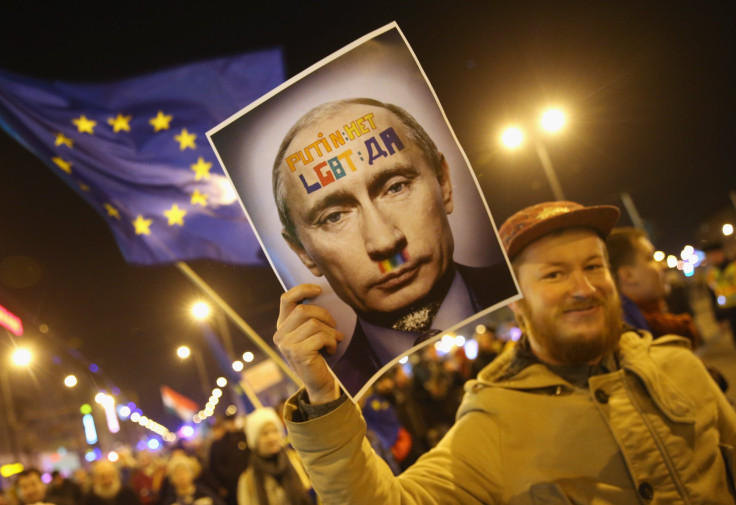443-Foot Vladimir Putin Portrait Ahead Of G20 And 5 Other Unique Creations Of Russian President

Italian artist Dario Gambarin transformed a field near Verona, Italy, into a 443-foot wide portrait of Russian President Vladimir Putin onThursday ahead of G20 summit in Hamburg.
Gambarin used a tractor to create the portrait which can be best viewed from up in the air. Gambarin said he loves making portraits that are short-lived; the Putin portrait will be torn down when the field is cleared for the next crop planting, which is just a few days away, Fox News reported.
Prior to making Putin's portrait, Gambarin had made similar land portraits of President Donald Trump, former Secretary of State Hillary Clinton, Pope Francis and Jesus.
Read: Ahead Of Trump-Putin Meet At G20, Trump Organization Renews Websites For Potential Russia Business
This isn't the first time the Russian president has been portrayed in an unique way, and which has garnered headlines across the world. One of the most notorious portrait of Putin was drawn after Russia passed the “gay propaganda” law in 2013; the law banned "promotion" of homosexuality in front of minors. The picture depicted the Russian president as a gay clown, with red lips, purple eye shadow and mascara with the world “STOP HOMOPHOBIA” painted on his forehead, the Telegraph reported.
I'm slightly disappointed it wasn't Putin the gay clown ☹️☹️ pic.twitter.com/nbtTVLMZ2e
— CC Shoreditch 49 again 🎉 (@ccshoreditch) July 5, 2017
It became part of a meme that went viral and was even used by Scottish brewery Brewdog for advertising their special edition beer called "Hello my name is Vladimir." The image, one of the many in the series of pictures, posted by a man called Alexander Tsvetkov, was banned by the Russian government in April 2017.
The uniqueness of another of the Russian president's portraits was derived more by the method used to paint it rather than the portrait itself. An Italian artist living in St. Petersburg, Russia made the portrait using her breasts as a brush back in September 2015.
"Using your breasts to paint is more complicated, it's labor intensive and slow," Romanovskaya wrote on her blog, Moscow Times reported. "Any mistake can mean you have to start all over again."
Read: Trump-Putin Meeting At G20: 'Diplomacy' Not A 'Popularity Contest,' Says Former US Ambassador To Russia
She wanted to present the portrait to Putin on his 63rd birthday, but was concerned whether the president would approve of the means she used to paint the portrait.
"I would want to give these paintings to Putin and Medvedev, but how would they react if they found out about the unconventional painting technique?" the artist said.
However, before the artist could gift her creation to Putin, it was stolen from her when she was on her way to deliver it to the Kremlin on a sleeper train, Daily Star reported. Romanovskaya believed the excessive hype surrounding the painting was responsible for the incident.
Eminent photographer and storyteller Platon was tasked with capturing a snap of Putin back in 2007, when Time Magazine announced that the latter was going to be the Man of the Year. There was just one problem – the Russian leader hated having his picture taken.
Nevertheless, Platon stepped up to the job which he later described also included ominous-looking BMWs, a swarm of snipers and a 15-minute deadline, according to the Guardian. Although Platon has taken photographs of many presidents and other famous personalities, the portrait of Putin remains one of his best works.
Ukrainian artist Daria Marchenko created a portrait of Putin entirely out of bullet shells. She revealed her creation, which she termed “Face Of War,” in August 2015. A larger part of the bullet shells used to draw the portrait were procured from Marchenko’s friends who were fighting for freedom in Ukraine.
"A bullet shell is a symbol of an interrupted life," she said, NDTV reported. “The world does not realize just how much my country has lost. So this desire to work with more and more shells came naturally."
© Copyright IBTimes 2024. All rights reserved.












